Anyone who ever followed the legendary Rich Piana knows that he could put away some food. But not all of us were graced with his physique and genetics. For many of us, eating too many carbohydrates keeps our blood sugar and insulin levels too high for too long, turning off fat oxidation as our bodies work on the sugars.[1,2]
We don't have time for that nonsense, and neither did Rich -- we need to get those carbs into the muscle cells and get back into the gym and do it all over again. Because if you want to train like a freak, you need to crush protein and carb up like a freak.
Welcome to the FREAK SHOW
It's been years since Rich Piana's 5% Nutrition came out with a whole foods based carbohydrate supplement in Real Carbs (originally called Real Food). This fantastic supplement ditched the nasty maltodextrin-based nonsense we were seeing in carb supplements and weight gainers at the time, and went with real carbohydrate sources.
But even with real foods, we can still get elevated blood sugar levels, and could use some assistance in driving them back into the muscle. That's exactly what FREAK SHOW does.
In six capsules, we have an incredibly well-rounded Glucose Disposal Agent that probably doesn't even need a full serving to get the job done. There are eight active ingredients inside, as well as some additional vitamins and minerals like chromium to drive it all home.
Below, we cover the ingredients and mechanisms behind it -- but first, check out our prices and sign up for our 5% Nutrition alerts:
Rich Piana 5% Nutrition Freak Show – Deals and Price Drop Alerts
Get Price Alerts
No spam, no scams.
Disclosure: PricePlow relies on pricing from stores with which we have a business relationship. We work hard to keep pricing current, but you may find a better offer.
Posts are sponsored in part by the retailers and/or brands listed on this page.
What ingredients does it take to make a FREAK SHOW?
Here's what we get in a full six capsule serving:
-
Gymnema Sylvestre Extract (leaves) - 1,000 mg
A freaky strong GDA supplement. 3 caps twice per day before carb meals is our suggestion, along with 5%'s.
5% Nutrition starts the Freak Show out with a bang, using a potent one gram dose of Gymnema Sylvestre. This is one of those plants sometimes called a "miracle fruit", while we don't like using those kinds of words, it does have numerous incredible health benefits, many revolving around its ability to control blood sugar.[3-5]
Native to Australia, Africa, and India, gymnema has historically been used for insulin conditions, inflammatory problems, asthma, and even... snake bites![3] The herb possesses antimicrobial and hepatoprotective properties, and also seems to suppress sugar cravings.[3]
The main bioactive constituent is gymnemic acids, and while we don't know what standardization is here in Freak Show, the incredibly high overall dosage leads us to believe that we're going to get a lot of it. Research has shown that the gymnemic acids do most of the work in terms of the hypoglycemic effect and weight management properties through four primary mechanisms:[3]
- Enhanced insulin secretion
- Promotion of pancreatic islet cell regeneration
- Enhanced glucose utilization
- Lower glucose intestinal uptake
Heil to the true king of sports nutrition, we finally have a GDA to go along with all of those carbs!
The long and short of this is that gymnema enables you to better handle your carbs, so you can embrace them rather than fear them.
Interestingly, studies have shown that gymnema sylvestre decreases the perception of sweetness,[4] which may lead you to crave less sugar! It's theorized that the gymnemic acids block certain glucose receptors, and this may be useful for those who struggle with sugar and want to focus on unrefined carbohydrate consumption (a la steak and potatoes).
Most clinical studies utilize around 200-400 milligrams of gymnemic acids, and we're confident (but can't be certain) that we're in that range, given the gymnema extracts on the market.
A large dose to start off a 5% Nutrition supplement isn't a surprise at this point, and there's far more to go.
-
Banaba Powder (Lagerstroemia speciosa)(leaves) - 500 mg
Like Gymnema, banaba is well-studied in humans for glucose disposal.
There's data demonstrating a 10% reduction in fasting and postprandial blood glucose levels in insulin-resistant users.[6-9] The primary constituent here are the corosolic acids,[6,7] and although we don't have a standardization... we have yet another large overall dose. There are also other important constituents like ellagitannins, valoneic acid, and oleanolic acid which may further boost banaba's weight loss and insulin sensitivity boosting properties.[7]
The history and clinical use is successful, but in terms of mechanism, we learn the most from animal studies. It seems that banaba leaf extract can help signal and activate GLUT4 receptors in muscle tissue.[8] These are the same receptors that insulin uses to replenish glycogen stores in muscles, so taking this with carbs in a highly-trained athlete (like all 5-Percenters are) will help get your glucose in the right place - the exact reason why we take glucose disposal agents!
Again, we have a large dose here, and may not even need a full six capsule serving to get the job done - but that will depend on your insulin sensitivity, carbohydrate dosing, and blood sugar testing.
-
Berberine Hydrochloride (from Phellodendron) (Phellodendron amurense Rupr.) - 350 mg
Next up is berberine, the most well-known glucose disposal agent that has some phenomenal research behind it. Berberine works by helping the body handle glucose more efficiently, and is often a first line of defense when dealing with insulin resistance and metabolic syndrome.[10-13] Put simply, this is our favorite GDA ingredient, and it wouldn't be a Freak Show without having it!
What's incredible is that berberine improves muscle insulin sensitivity, even for those whose muscle cells are already saturated -- a huge problem in obese and overweight individuals. We can use this to our advantage by employing it in a higher-carb diet for athletes, sneaking more glucose into the muscles.
We always love to cite the study where berberine rivals the popular pharmaceutical, metformin, albeit when used at higher doses than we have here.[14] This ingredient is that powerful - and had less side effects than the drug as well!
Mechanistically, berberine works primarily by stimulating AMPK so that glucose uptake is improved, and it also increases GLUT1 transporter activity, hitting other pathways than the above ingredients.[15] It also inhibits enzymes like PTP1B, effectively mimicking insulin's actions.[16]
Long story short: berberine rules, and while we've seen it dosed higher, we'll take it at any dose, especially when combined with the monsters above and below.
-
Cinnamon Extract (Cinnamomum verum)(bark) - 300 mg
Iiiiiit's Shake Time! A dairy-free protein powder made with beef, egg, and chicken!
We love cinnamon for flavor (Vanilla Cinnamon Shake Time, anyone?), and there's another reason it's often paired with sweet foods - it can reduce fasting glucose levels and enhance glucose absorption in many tissues![17-19]
Reason being, Cinnamomum has many biologically potent compounds, including cinnamic acid, catechins, coumarin, epicatechin, methyl chalcone, eugenol, and cinnamaldehyde that exert an array of glucose disposal properties.[17]
However, scientists have honed in on one specific polymer that can mimic insulin -- methylhydroxychalcone[18,19] -- and it may be this one that does a lot of the work here.
There are numerous other benefits as well, including better lipid levels (including lower triglycerides), improved HbA1c, lower fasting and postprandial blood sugar, and improved antioxidant status.[19]
Once again, 300 milligrams is a solid dose - we've seen higher, but we usually see lower. It may also make your bottle of Freak Show smell better, but this one's definitely loaded with some potent herbs.
-
Bitter Melon Extract 4:1 (Momordica charantia)(fruit) - 200 mg
Next up is bitter melon extract, from a plant scientifically known as Momordica charantia. This vine provides a wide array of health benefits and has traditionally been used in the management of diabetes and insulin resistance.[20]
Many studies on bitter melon demonstrate anti-inflammatory and hepatoprotective properties on top of the anti-diabetic and weight management benefits.[20]
What's unique about bitter melon is how it can protect the liver and pancreas -- it can prevent beta-cell damage and help better regulate insulin responses.[20] Further, it can inhibit fat cell growth![20] The mechanisms aren't fully understood, but the bioactive constituents seem to carry out effects on pathways such as AMPK, PPAR-α, and PPAR-γ.[20]
The foods we eat often trash our livers, especially when in bulking season, so having bitter melon around to help protect them is definitely a good cause.
-
Na-R[+]-Alpha Lipoic Acid - 200 mg
Don't let this one sneak by you so deep into the label - this ingredient and dosage are on point, and we believe it's one of the most underrated blood sugar protective ingredients. We're talking about alpha lipoic acid, but the most bioavailable form -- Na-R-ALA. Dosed at 200 milligrams, we've seen this ingredient on its own keep average blood sugar levels 5-10 points lower.
ALA is most often used for neuropathy related to chronically high blood sugar levels.[21] It's been shown to reduce blood glucose levels and hemoglobin-A1c,[22] but also has several incredible antioxidant properties it elicits in both humans and animals.[23-25] This allows it to greatly improve health in the wake of vascular damage.
There are several unique mechanisms at play, including the ability to induce heat shock proteins, protecting insulin from stress proteins.[26]
Alpha lipoic acid can stimulate AMPK in metabolic tissue, and seems to reduce appetite and enhance liver fat breakdown.[27] Consider AMPK the "we need energy now" enzyme that encourages fat breakdown and other metabolic and appetite-based activities.[28,29]
Going with Na-R-ALA, 5% Nutrition shows that it cares -- we don't always see this form, and we definitely don't always see it at the trusted 200 milligram dose. Once again, there's a good chance you won't even need a full dose of Freak Show, at least not all at once!
-
Fenugreek Extract (standardized to 50% Saponins)(Trigonella foenum-graecum L.)(seeds) - 100 mg
Previously on PricePlow: 5% Nutrition KILL IT Push Pop Flavor - An unmistakable throwback to those orange & cream push pops from childhood!
We often see fenugreek in testosterone-boosting / hormonal supplements, but its blood sugar protection properties shouldn't be overlooked either! The primary constituent research has shown to elicit such effects is 4-hydroxyisoleucine, known to improve blood glucose.[30,31] It can even enhance how much glycogen your body makes,[30] which should be exciting to carb lovers who want to keep saturation optimal.
Thus, most of the fenugreek research pertaining to glycemia is on 4-hydroxyisoleucine.[31-33] In terms of mechanism, it seems to improve the glucose sensitivity of insulin-secreting cells.[31] So when supplementing fenugreek, you may get a lowered threshold required to release insulin -- which is actually how some pharmaceuticals work (drugs are often built to copy natural ingredients).
With these cells becoming more sensitive, it can thus make you more insulin sensitive in general. And it doesn't hurt that fenugreek can help you keep more testosterone around as well, but that's another article for another day!
-
Black Pepper Extract (Piper nigrum)(fruit) (Bioperine) - 10 mg
To end this Freak Show, 5% Nutrition ensures that you get the most out of your GDA with a "double" dose of absorption-enhancing Bioperine black pepper extract. We often see 5 milligrams, but 10 milligrams is superb for those of us who will only need three capsules of the product at a time.
After nearly a decade of bulking, it's finally time for 5% Nutrition to release a fat burner: It's Shred Time!
The piperine inside can boost ingredient uptake, keeping them around longer and ultimately improving absorption. It works by inhibiting P-glycoprotein and CYP3A4,[34] which is important since these enzymes metabolize certain nutrients and drugs. Slowing them down keeps the active ingredients around longer to be absorbed by the body.
There's not much specific research with regards to the GDA ingredients in Freak Show, but we've seen it work very consistently with other herbs and vitamins including curcumin,[35] coenzyme Q10,[36] vitamin B6,[37] beta-carotene,[38] and resveratrol.[39]
It may even activate some thermogenesis, to stack with Stage Ready and Shred Time!
-
Added Vitamins and Minerals
Now time for the key micronutrient support. First we have some added Thiamine (Vitamin B1), which is helpful for glucose production. Diets high in carbs and processed foods may lead to thiamine deficiency,[40] but at 8333% DV, we're not going to be so concerned about that!
Don't miss the Chromium!
What a bottle (as always). In true Rich Piana fashion, this bottle is "bigger than average" due to the immense number of capsules!
Finally, there's also 400mcg chromium provided in the form of chromium chloride. Chromium is an important trace mineral that is extremely useful for insulin secretion.[41-43] It helps improve insulin sensitivity and lower blood glucose levels, especially in those who are insulin resistant in the first place.[44]
It's very well studied for these effects, and 400 micrograms is an above-average dose -- we're usually happy to see at least 200 micrograms.
Dosage
Generally, GDAs are taken before a carb-containing meal. We've stated this several times throughout the article that you may not even need a full six capsules due to the strength of the Freak Show. Instead, we'd opt for three capsules before two different carb-containing meals to pace out the effects - but some of you 5-Percenters who go huge on a single meal may beg to differ!
Time for the Freak Show
Once again, we have another well-rounded, highly-dosed supplement from 5% Nutrition. Anyone who followed Rich Piana knew that he could throw some serious food down -- but it's important to get the food where we want it to go, and get our blood sugar levels back down to earth so that we're not sitting around working on sugars while dietary fat is getting stored.
While 5% Nutrition has several incredible low-carb functional foods (Knock the Carb Out!) that we absolutely love, the average 5-Percenter wants to slam carbs. After all, they do have one of the industry's first whole foods based carb supplements in Real Carbs.
Freak Show can be used by low-carb dieters to maintain health and insulin sensitivity (we'd opt for 2-3 capsules in that case), but let's be real - this one's for the carb vacuuming athletes who want to get every last carb in, and then get every last ounce of benefits from those carbs.
With these large doses, a sneaky solid dose of Na-R-ALA, and a solid hit of chromium, don't overlook this label. Question is how many caps you really need to take at once -- and the only way to find out is to play with a glucose meter and get eating!
Rich Piana 5% Nutrition Freak Show – Deals and Price Drop Alerts
Get Price Alerts
No spam, no scams.
Disclosure: PricePlow relies on pricing from stores with which we have a business relationship. We work hard to keep pricing current, but you may find a better offer.
Posts are sponsored in part by the retailers and/or brands listed on this page.

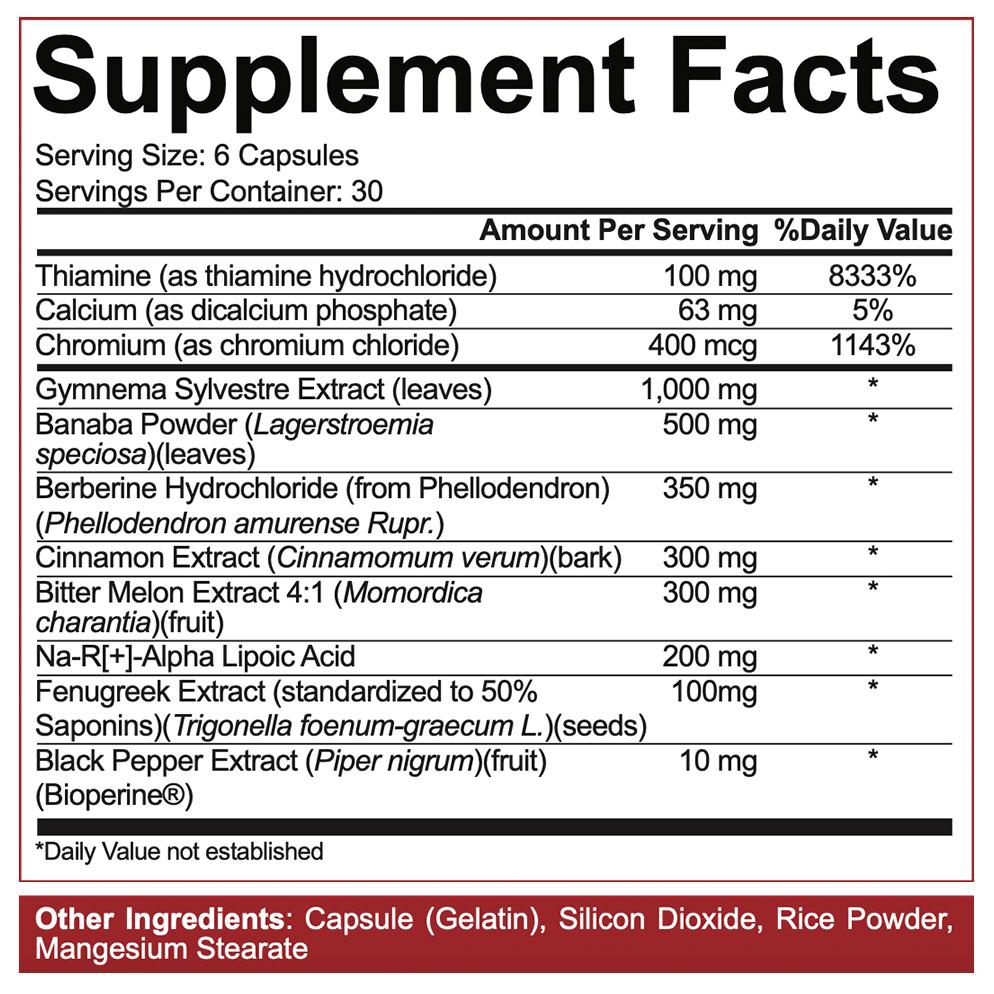

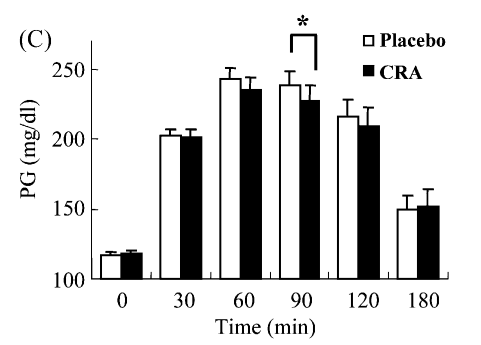
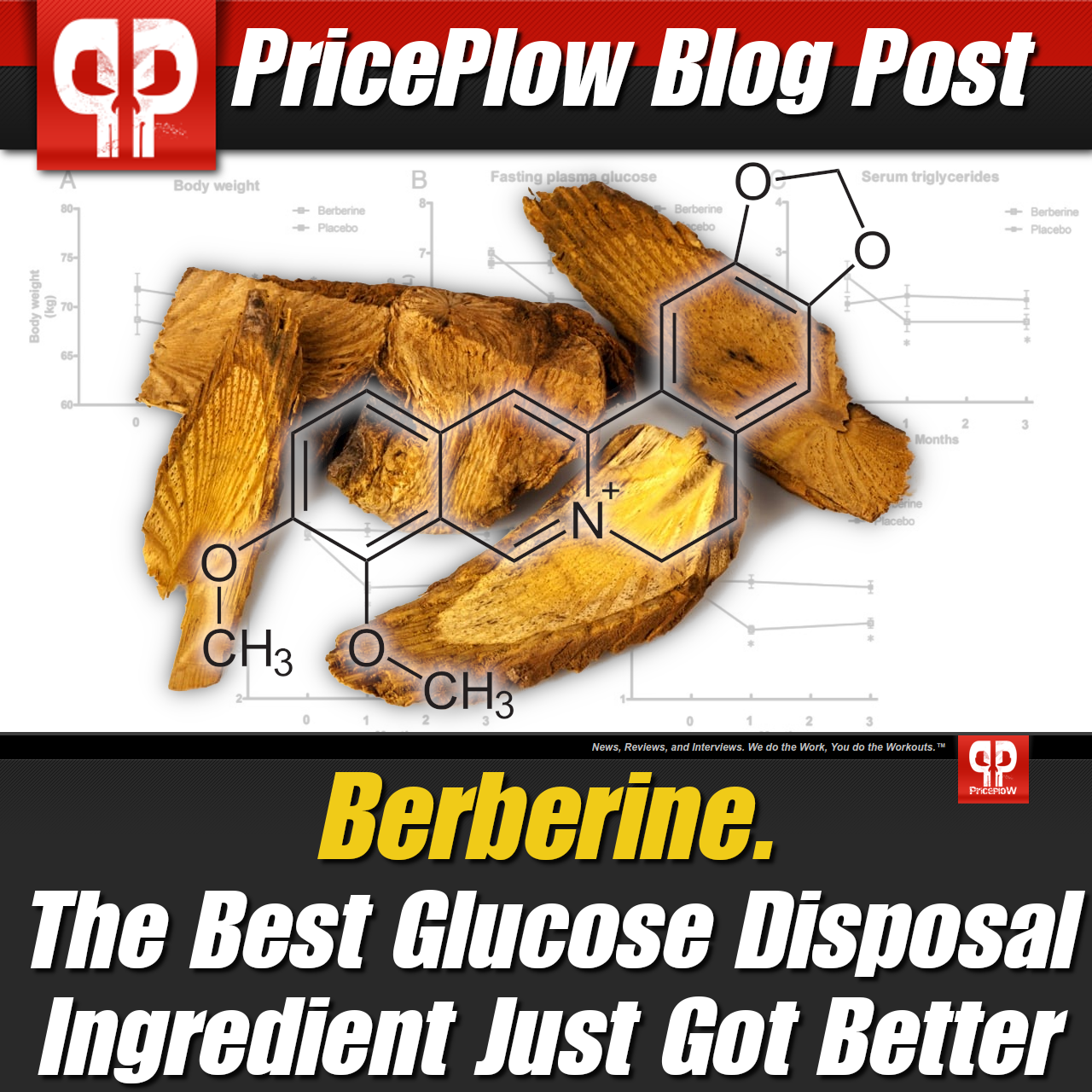
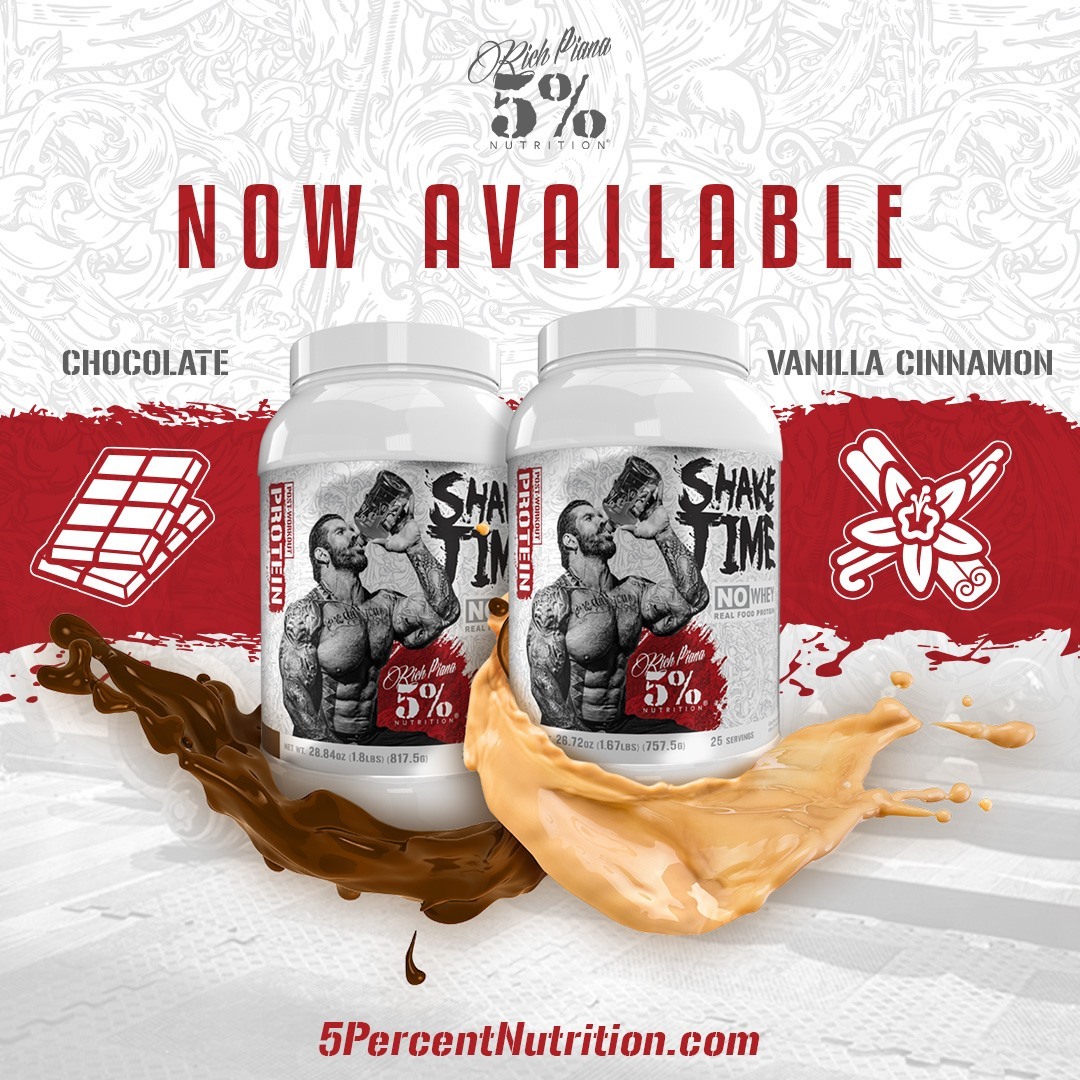

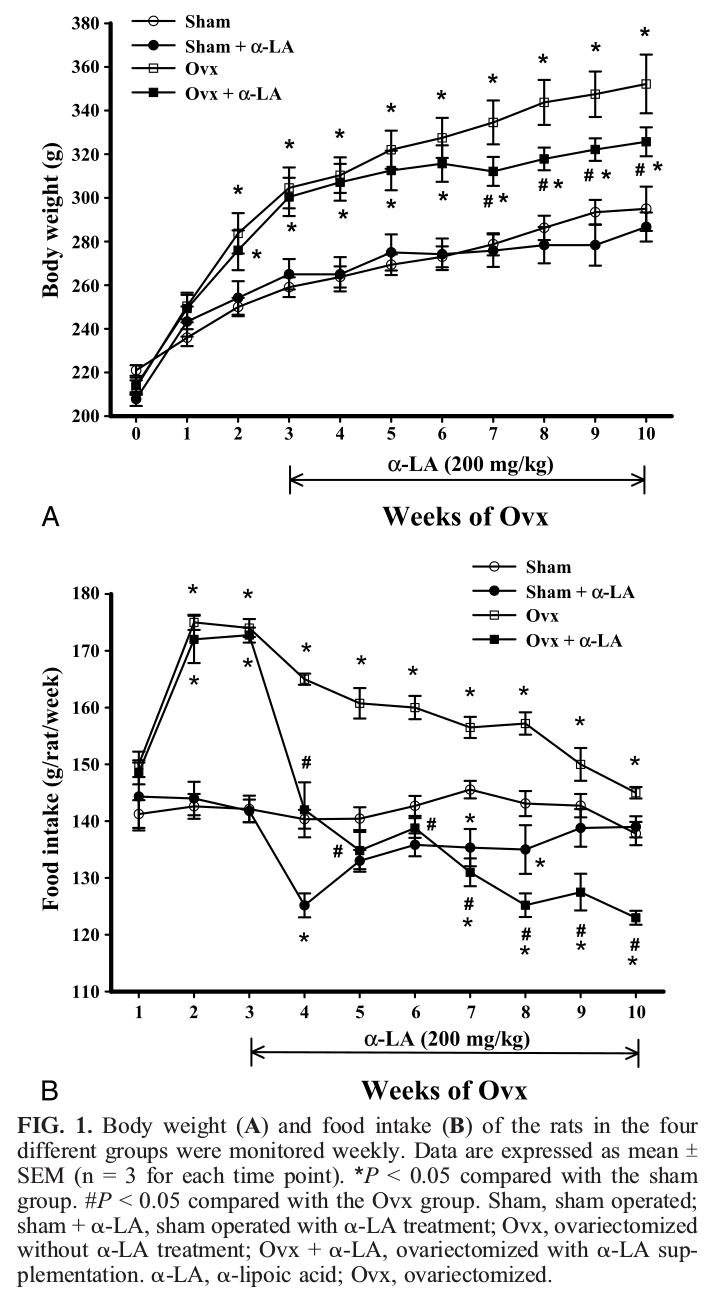
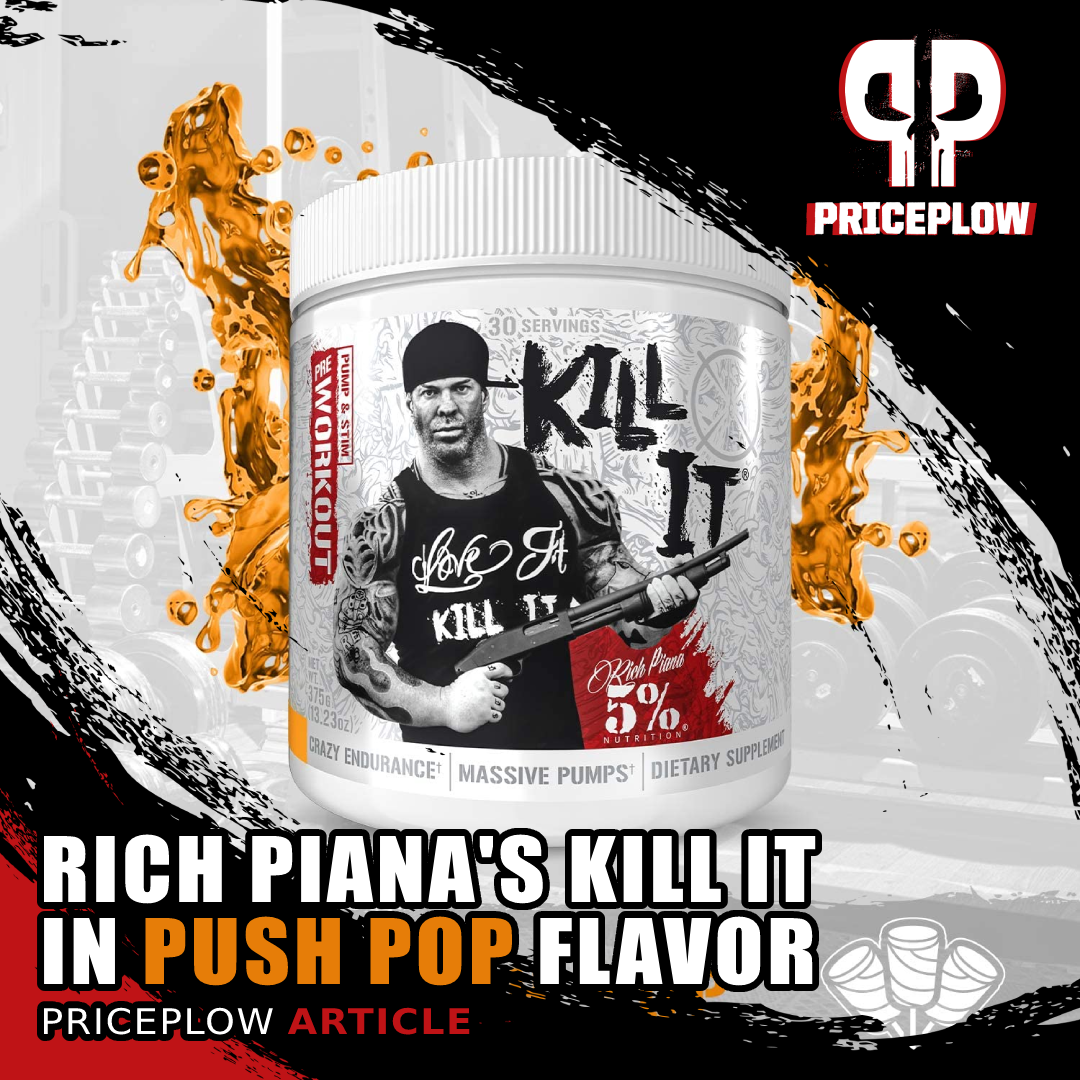
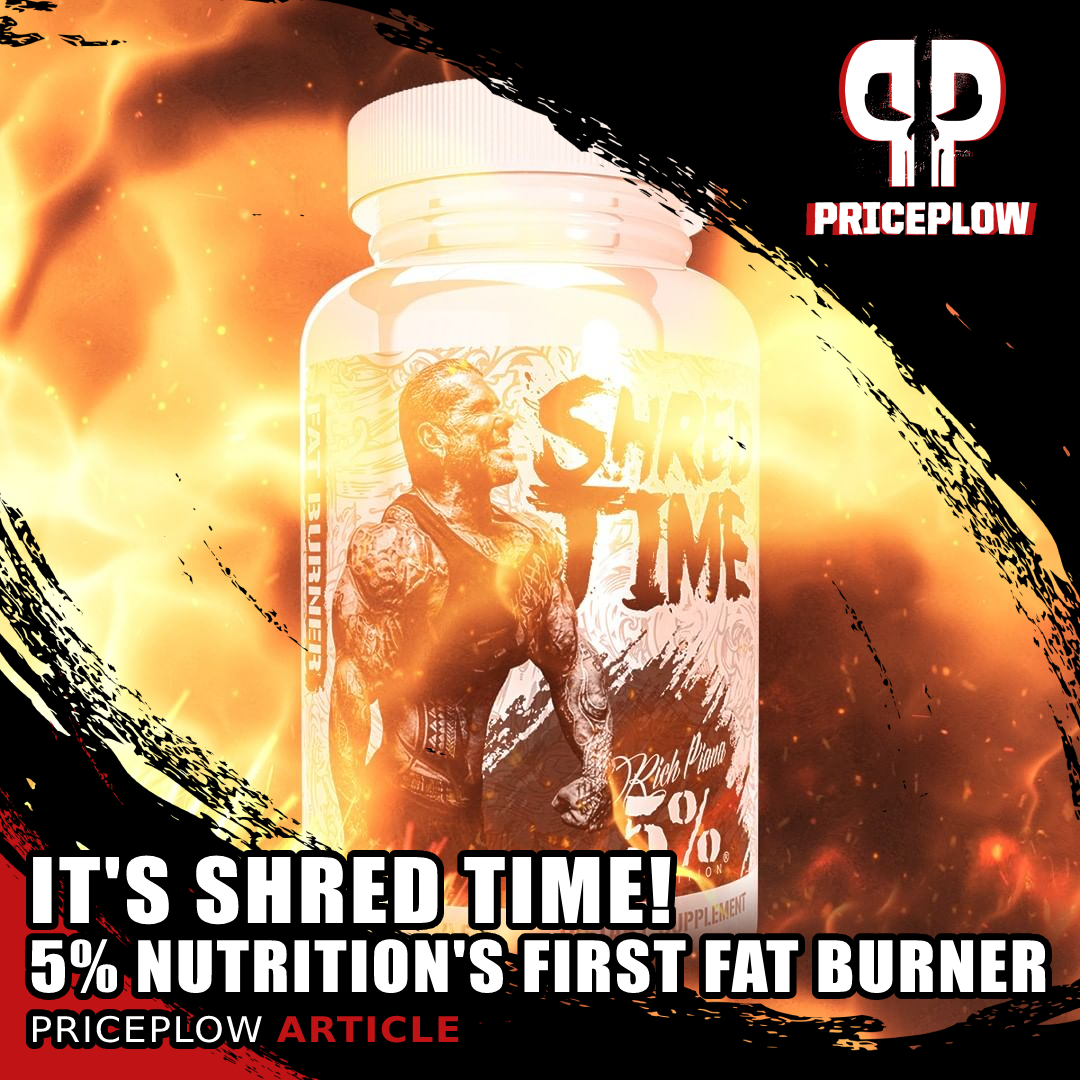
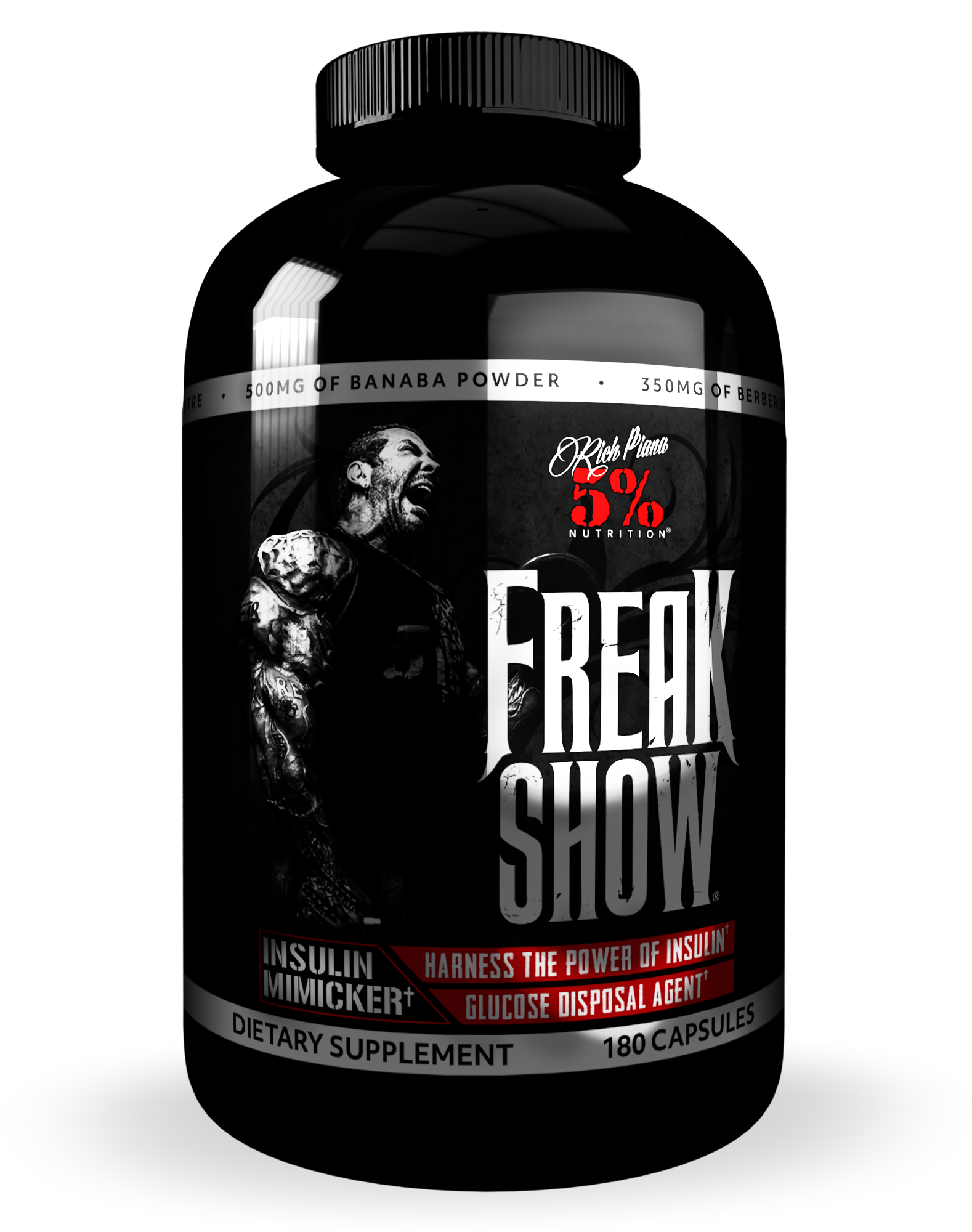



Comments and Discussion (Powered by the PricePlow Forum)